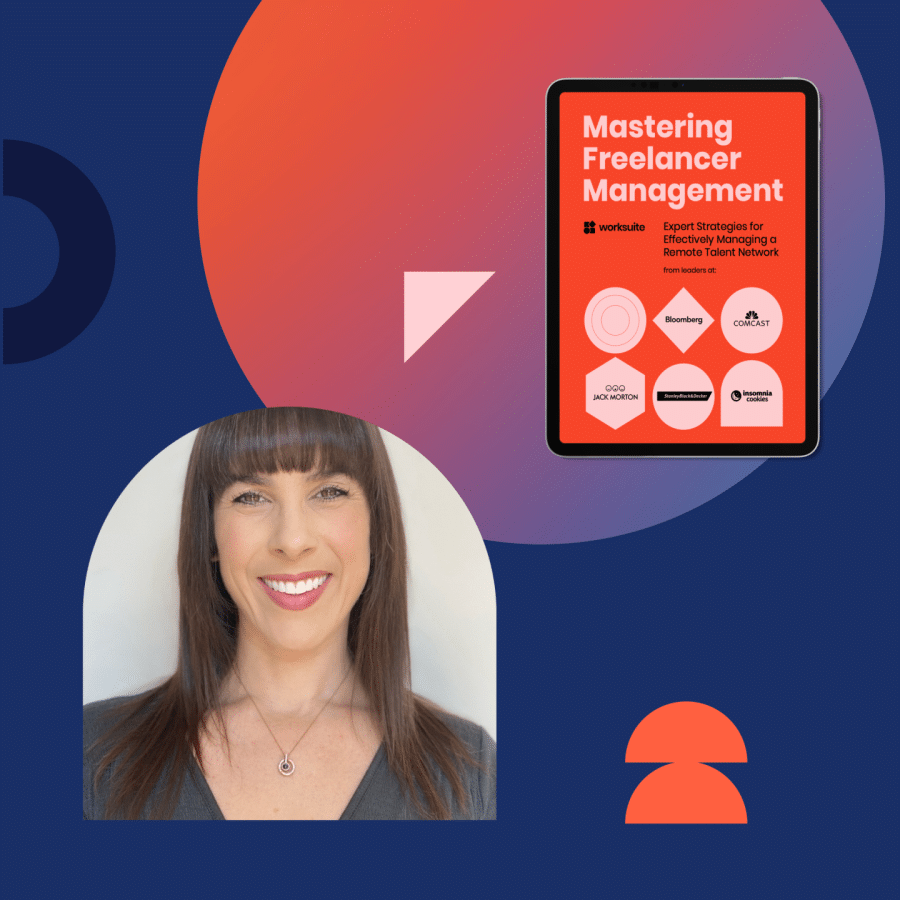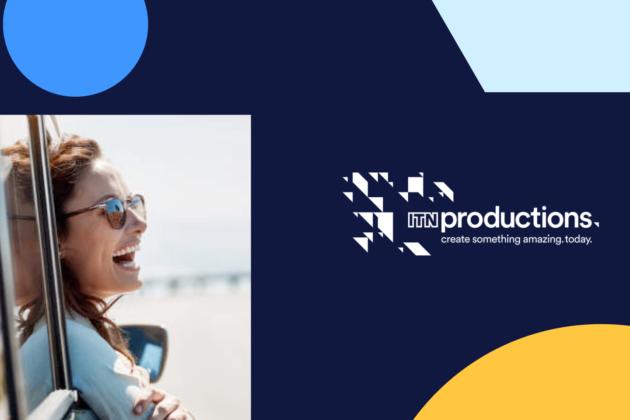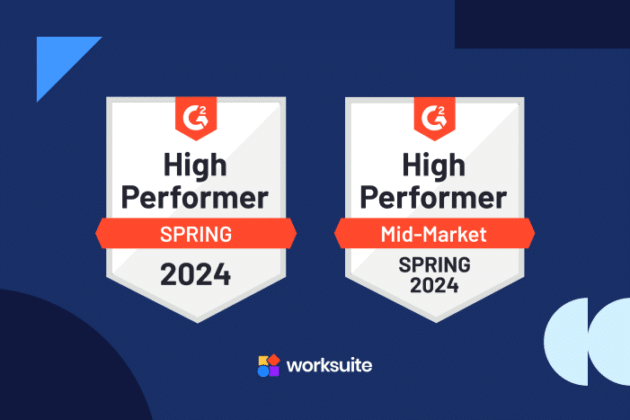
Mastering Global Program & Talent Management with Lauri Accardi of CataPoint Consulting


This in-depth interview is part of Worksuite’s ongoing series on Mastering Freelancer Management: Expert Strategies for Effectively Managing a Remote Talent Network. Download the full guide here, and subscribe to our YouTube channel to see the latest videos.
Lauri Accardi, founder of CataPoint Consulting, LLC, brings over 20 years of Fortune 50 corporate experience to transform leadership and Scaled Agile understanding. Lauri shares insights from her vast experience in program and project management spanning global enterprise brands like Comcast, to agency leadership roles at Digitas Health, all the way to creative production studios like Klip Collective.
As a dual Master’s degree candidate, she’s earning her MBA and a Master’s in Strategic Management and Executive Leadership. Lauri actively contributes to the community through PMINJ, serves on the Penn State World Campus Student Advisory Board, and chairs the Academic Affairs Committee. A dedicated wife and mother of four, she balances family life with hobbies like exercising, cooking, and fine dining. Embodying continuous learning and agility, Lauri’s journey is a testament to her heart, spirit, and dedication.
Let’s start with the easy stuff — about you. What do you love about your job when it comes to managing freelancers and external creative resources?
In program management, resources are everything. We have to ensure that we have all the right people in all the right places to deliver everything on schedule and on time.
Resource management is critical in every single aspect of my role. And I absolutely love working with a variety of people with different skills from around the world. That’s part of the beauty of working on various programs – you get to better understand the different roles, responsibilities, skill sets, and personalities. I love being able to figure out what is the best fit for the project and for the resources assigned to each task. I always keep in mind the individual goals for the resources and the goals of the project or program to ensure they remain balanced and in sync.
Specifically, as it pertains to international resources — vendors, freelancers, studios — you mentioned that you love to work with a variety of people. What are the pros and cons of hiring and managing global contractors?
The challenge usually happens when there are conflicting time zones. That’s really the only thing that I recognize as a significant challenge. As long as a project or program is flexible in terms of not needing people to be in the same location, which I have my personal thoughts on…
It is best to see what works for the team and what works for the people, as opposed to having a specific mandate regarding location. I’m always flexible to include different time zones and people of all cultures. You’ll get more value in a project outcome when you have people on the team who come from diverse backgrounds.
I always look at the silver lining of things. With COVID, we had this beautiful opportunity to open up our pool of candidates. We could look not only across the U.S. but also to international partners on projects. Sometimes, the time difference has been beneficial. For instance, I’m an early riser. If I’m working with someone in the UK, It’s really easy for me because I’m up early, so I can finish my day early but still input the same hours. There is definitely a benefit there.
On the other hand, if I have someone in California and they’re working with someone in the UK, they totally miss each other. That doesn’t work out easily. Understanding the team makeup and what might work best for them is essential. I always remain open to having people from all backgrounds, no matter where they are.
Forming culturally diverse teams will be incredibly important. Engaging talent from other countries and seeking a diverse talent pool will ultimately benefit the work in the long run.”
Could you share more about how you facilitate that connection and collaboration across time zones?
I always ensure a dedicated time is established at the beginning of working together. It’s crucial to figure out with the time zones what that mutually agreeable day and time is so everyone knows when and where we will regularly connect synchronously as a standing meeting. We can evaluate before each meeting; if we don’t need to hold it, we can cancel. We all have that sacred time for our standing meeting, and don’t double-book. I know that even When working with people in Korea or Tokyo, for example, I keep in mind that there is a 13-hour time difference for the East Coast. That’s a pretty big gap. But you can always find that sweet spot at 8am on the East Coast, which is 9pm there, so we can make that work. There are different ways that you can find how to make it work for everybody. It’s just about figuring out who likes to wake up early, who does not want to, and how you can find spots that make sense for everybody.
I like it. Finding the sweet spot for overlap and direct comms. What are some other challenges that you’ve run into when managing remote contractors?
Especially when people are off-site, getting engagement has been challenging. I don’t like to make a mandate that everybody invariably needs to have their cameras on. I personally feel very strongly about connection. It can be challenging to connect with someone when it’s just a voice, and you’re looking at a picture of them. Whenever possible, I encourage people to be present to come on camera if they feel comfortable so that we can all stay actively engaged. In meetings, I have many open questions to maintain the engagement.
Also, retrospectives have been phenomenal in getting people to feel more comfortable and engaged, especially with a dispersed group or one that includes different contractors. In those cases, people might need to know everyone’s background and skills, which can lead to competition.
Retrospectives have been phenomenal for getting people to be open and honest. I make them anonymous, and no one has to say, ‘Hey, I did this.’ Rather, I open up the opportunity for people to talk more openly about what they’re experiencing, what they’re feeling, and how we can improve things collectively.
It helps to align everyone as an ultimate team, as opposed to one contractor working on one thing over here, who might feel like a small part of a massive project rather than an invested team member.
Do you have a framework for running an effective retrospective?
Yes, I do. I’ll usually set up a retrospective board and send it out so everybody can add to it before the meeting. I encourage people to reply to different comments or add reactions to keep it fun and engaging. Everything remains anonymous, and everybody can get their thoughts in — in advance. It also helps the facilitator because you can get a preview of what you will be discussing with the group.
But I love to ask:
- What shout-outs do you have?
- What’s been going well?
- What hasn’t gone so well?
- What would we like to try next?
- What puzzles us?
This helps us celebrate our wins and discuss our outstanding accomplishments, ensuring that is the highlight and starting point. People tend to focus on the negative, but when you have ‘What’s gone well?’ and it’s empty, people think, ‘Oh, well, we have done some good things.’ It encourages people to share and celebrate wins, which is a great way to start.
Next, it’s essential to recognize that there’s always room for improvement. So, what are the things that we can improve upon? As a facilitator for those conversations, it’s vital to focus on the fact that this is about trying to improve collectively. It’s not about complaining. My approach is to say, ‘We see that this is something that people haven’t responded well to, so how can we collectively work to find a solution to improve this moving forward?’
A lot of dialogue usually comes up with, ‘What do we want to try next?’ People have some great ideas you can discuss as a group and decide if you want to implement moving forward.
‘What puzzles us?’ allows everyone to discuss their questions.
From these five prompts, I usually get significant engagement.
Retrospectives help to align everyone as an ultimate team, as opposed to one contractor working on one thing over here, who might feel like a small part of a massive project rather than an invested team member.”
Do you ever run into cultural communication differences when you have talent from all different places in those retrospectives?
Yeah, you can absolutely get a huge gamut. Think about it from a personality perspective; you can get certain people who are really zealous and want to talk and others who are quieter, more reserved and don’t want to say anything. Usually, when you get a topic that strikes a nerve for people, they’re more willing to speak up.
I like to allow people the flexibility during the retrospective to continue to comment anonymously. If there’s a question that I might have on an item that’s on the retro board, if someone doesn’t feel like speaking up because they happen to be shy — or there could be a language issue — or they feel less comfortable communicating on their feet — they can write an anonymous comment to add context. Everyone can see the comment live to help clarify without needing to speak directly to everyone. People feel more comfortable and safe when they are not having to be put on the spot.
Excellent. Switching gears a little bit… You mentioned earlier that one of the core tenets of program management is matching the right Skills and Resources to the Project. What’s your thought process there? How do you match the right talent to the right task?
Honestly, every program manager will approach it very differently, so I can only speak to my approach.
Every individual on the team is essential to me. When someone new is onboarded, I’m not just looking to know how many years of experience they have since I can find that in their resume. It doesn’t tell me what interests them or about their personal preferences. Someone might have a background that could be in one field but have acquired various skills that are also appropriate for multiple roles.
I want to find out the specific goals and desires of each individual. What are the things that they feel comfortable and confident with? What are the things they would like to do more of? What are their strengths, and what are their weaknesses? With that information, I can appropriately map their skills to the proper role in the project. I take a more holistic approach to understanding people as people, not people as the typical ‘resource.’
I always partner with the functional lead to ensure they feel comfortable and confident in my decision. I always have a rationale for ‘why’ I make the recommendations I do. It allows the functional lead and the resource to feel more comfortable moving forward.
I don’t personally feel there should be a difference between ‘managing’ and ‘leading.’ That is a particular choice that I have made. Even though I don’t have specific authority over freelancers as their people leader, I want to inspire them to do their best work.”
I like that. People as people. This brings me to my next question… What is the difference between managing external talent vs. leading a team? Or is there a difference?
I don’t personally feel there should be a difference between ‘managing’ and ‘leading.’ That is a particular choice that I have made. Even though I don’t have specific authority over freelancers as their people leader, I want to inspire them to do their best work. I want to encourage them to meet these achievable deadlines and continue to excel in their role.
I don’t inspire them; what’s in it for them? Their work becomes just a paycheck. We all tend to spend more time at work than at home with our families, so I want people to feel invested in — as individuals. It helps them develop an investment in wanting to see the project’s ultimate success and see it through to launch. That investment ultimately adds value to the result and the individual’s return.
Wanting to be a ‘leader’ rather than a ‘manager’ is also why I feel retrospectives are critical. I like the team to know ‘I’m listening to you,’ ‘We’re all here together,’ and’ We all want to achieve this goal together.’
My choice of ‘leading’ is the most authentic for me since I’m not the person who can say, for example, ‘You need to do this because I said so.’ That, I will never say. I have four kids; they can tell you I have never said that or used it as an excuse. That is what I think of as ‘management,’ not ‘leading.’.
I think about leading and guiding them to help them achieve a goal so that we can all feel the strength from achieving it together.
I love that. What would you say is your number one piece of advice on leading a team that encompasses external talent?
Try to be as consistent as possible with everybody and treat everyone equally. In certain companies, contractors will be looked at and treated differently from full-time employees. I have seen them treated as a disposable resource, which saddens me. They are individuals with skills and no different from an FTE. I treat everyone with kindness and appreciation.
I also suggest giving feedback. Honesty and transparency are essential and are reasons I genuinely appreciate retrospectives. So, if you recognize good things, provide that feedback. Feedback doesn’t have to be negative.
People often think that feedback is only for when things go wrong. That’s not true – you can tell them when things went great, too. It helps motivate and keep people excited and engaged. Keep the feedback loop open so people know what they’re doing well. It helps if you understand their goals to say, ‘All right, well, I see that there’s this opportunity here for you. If you’re looking to grow in this one area, let’s see if there is a smaller subset of this project that you can work on to try to achieve your goals.’
Everything in managing resources is really about understanding who people are as individuals and how I can support their growth to facilitate it in the best way possible — regardless of their employment status.
Everything in managing resources is really about understanding who people are as individuals and how I can support their growth to facilitate it in the best way possible — regardless of their employment status.”
You say you turn organizational chaos into clarity — which I love, by the way — what’s an example where you had to do this?
About 8 million stories just came to mind all at once. I mean, that’s the nature of being in project and program management. Everything is chaotic, and it’s really about understanding patterns and consistent trends.
I always evaluate what I do to support a program in the long term by understanding what the strategic future vision is. From there, I think about how we back that into the tactical projects and what I can do to facilitate and align. I always focus on getting a smooth flow and more visibility.
I love finding a standard for how we work as a team based on an understanding of what has worked and what has not worked. Again, this is where the retrospectives are helpful because you can see how we evolved as a team based on our needs. Quarterly planning is one of the best examples of chaos because everyone approaches it from their specific role and perspective. Everyone wants their work prioritized over everyone else’s. Still, no one has requirements, so it can be everywhere. I like to help get everyone together, consolidating that list and showing, okay, well, this is what it’s actually going to look like if we do everything. We need the resources that can line up against it. Let’s move things around to who can work on what, and then I suggest a roadmap. That way, people have a better understanding and visibility of the roadmap on an ongoing basis. When things need to adjust, it’s essential to communicate it immediately. I think holistically about how I can have a program, a continuous way of showing progress and ensuring transparent, open, and consistent communication.
What does the “future of work” mean to you?
From everything I have invested in from a continuing education perspective, Scaled Agile will differentiate companies and help them deliver quality and speed in the technology space.
Scaled Agile is a framework that aligns cross-functional teams around maximizing business and customer value and being able to plan more effectively. Every stakeholder in the cross-functional team is regularly in the PI planning session to ensure all decision-makers are part of the planning. Scaled Agile is the only way for companies to remain competitive and to do so at speed and at scale.
Forming culturally diverse teams will be incredibly important. Engaging talent from other countries and seeking a diverse talent pool will ultimately benefit the work in the long run. This approach will allow us to remain hybrid, proving more valuable to a positive work-life balance. It also allows companies to get exceptional talent and subject matter expertise from unique perspectives.
Implementing a Scaled Agile framework and hiring culturally diverse candidates will be the main differentiators for the innovators, the entrepreneurs, and the future business powerhouses.
What’s your top “tip to grow on” for scaling companies?
We are absolutely in sync, because again this comes back to Scaled Agile. It’s a framework that can go from an organizational level to an enterprise level, and it is centered on alignment for maximizing business and customer value at speed. It removes the individual ownership, moving towards team collective ownership, and it removes the corporate ego. That is a sticking point for many companies, so many companies will not go towards that model.
Executives frequently want to say they are the ones who made something happen or they made a product, but they did not – the team did. The saying, “There is no I in team,” is true in Scaled Agile. Ultimately, products will suffer because the egocentric focus will only slow down work. It creates silos and makes people less invested in the end result. The focus should always be on making something together, making it the best it can be, and celebrating everyone who is a part of the success.
People will show up differently to work when personally invested and feel valued and appreciated. They will work harder, move faster, want to achieve greatness, and do all that together. Ego-driven leaders deter that drive, and they disconnect people from their work.
What’s your most significant piece of advice for enterprises that manage a large contingent workforce?
My most significant piece of advice is in the candidate selection process, looking at the collective skills rather than just titles. Many hiring managers want to see a certain number of years with a specific job title. They don’t realize that many people acquire skills in various roles.
Looking at skills and proficiencies and any volunteer positions can give you a more well-rounded candidate with a different approach to the work. Use AI to scan resumes if you’re looking for specific titles. You’re not going to get the talent pool that you could get if you look more at their skills, recognizing how that diversity can also add value.
Take my career path as an example. I can’t say that there is a linear line that makes sense, but when I explain how I moved from A to B to C to D, it does make sense. They all led to one another, and I built the skills I needed to acquire to show to my current position. I am incredibly skilled at what I do. Still, again, it was not a direct line. Therefore, I continuously seek additional education and learning opportunities to continue growing those skill sets. Titles can be helpful, but they are only some of it. Skills, life experience, education, and volunteering should be the focus in selecting unique talent and fascinating perspectives.
My most significant piece of advice is in the candidate selection process, looking at the collective skills rather than just titles.”
Key Takeaways
- Run retrospectives to encourage engagement (especially with remote contractors)
- Bring in diverse perspectives with global talent
- Collect – and give – feedback consistently with everyone, regardless of their employment status
- Use a Scaled Agile framework to deliver high-quality work at scale
- As a leader, treat internal and external talent with the same honesty
- Look for skill sets and experiences, not just titles and resume buzzwords







